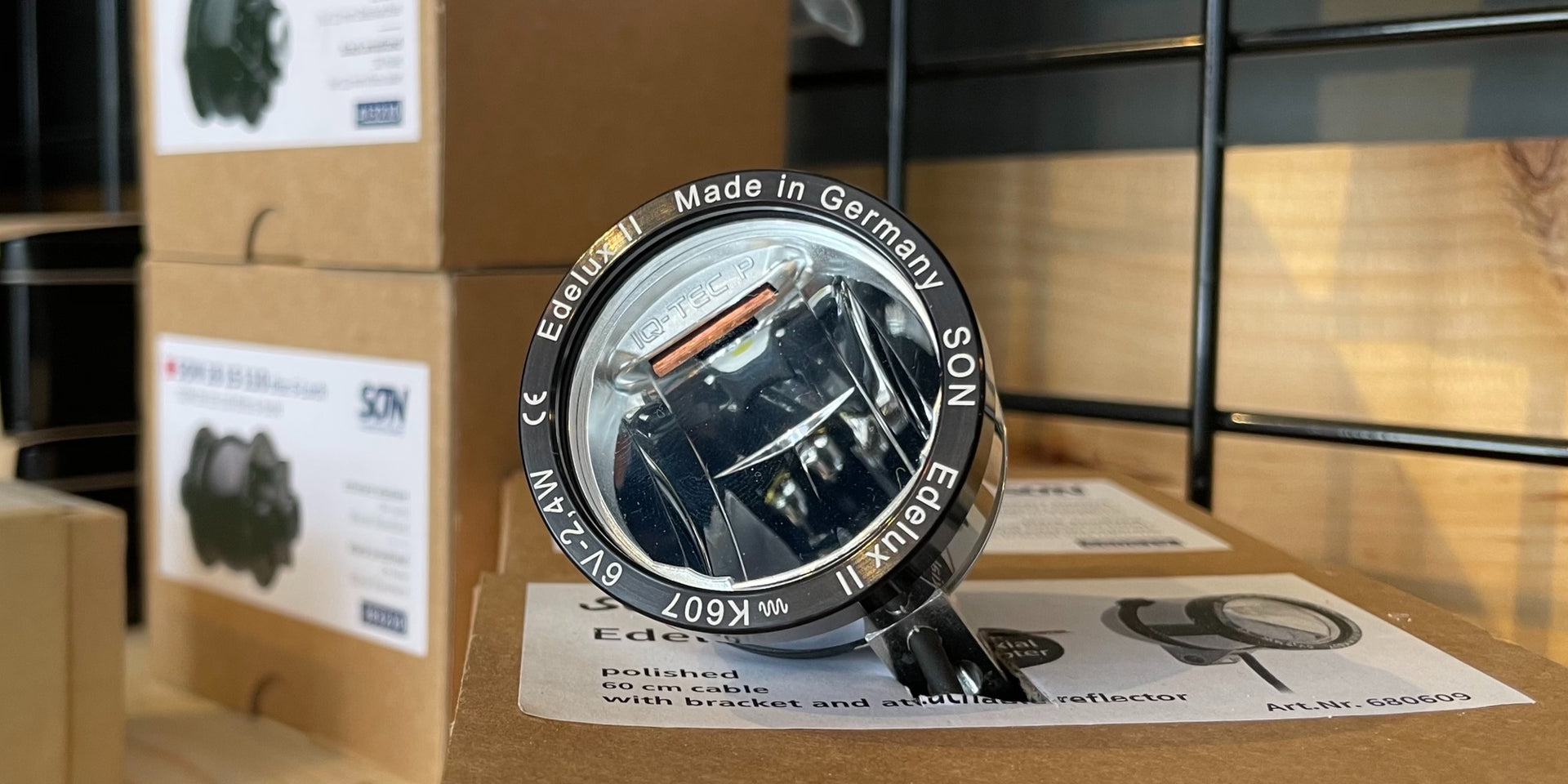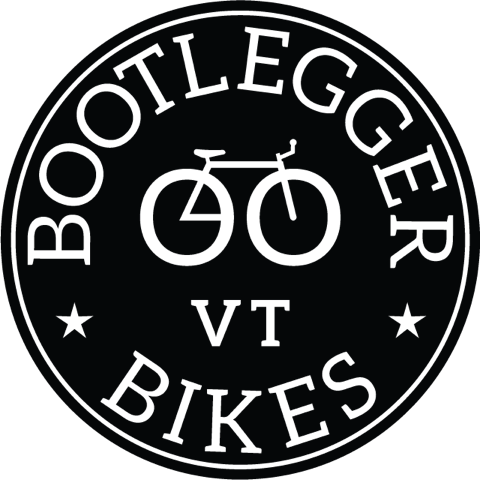
Dynamo Power
Dynamo hubs, sometimes referred to as generator hubs, are a great addition to any bicycle. Whether it be a family bike that frequents the rail trail, a commuting bike, a gravel bike, or a touring bike there are loads of advantages to outfitting your rig with some dynamo power.
Dynamo power on bicycles is something that's been around for many decades. Currently, it is ubiquitous in Europe and common on everyday bicycles there. In the U.S. it has mainly been adopted by the Rando and touring crowds, but has yet to make its way onto everyday bicycles. We love the idea of generating our own power for lights and USB charging. You're already producing that potential energy, so why not use it.
What is Dynamo Power/how is it generated
Let's start with a brief description of what we're talking about. The dynamo hub is a power generation source that gets installed on your bike in place of the existing or stock front hub. The dynamo hub has a generator within it that produces electrical energy as the wheel turns. So, you're simply producing power as you would normally ride your bicycle. There's a connector on the outside of the hub that interfaces with wiring that runs to lights and/or a USB charger. Yes, that's right....you can charge your phone or small electronic device as you ride, but we see one of the best advantages being lighting. There is a plethora of lights produced that work directly with dynamo hubs. This allows you to fix a light to your bike, make the appropriate electrical connections to the hub, and now you've got a permanent lighting option on your bicycle that doesn't need batteries or charging. It's always there....it always works. I know, if you're reading this, then you've done the light shuffle....where you're always stealing of a light from this bike to put on that bike. Or you go to ride your bike and the light is dead.....and it's rechargeable, so now you've got no light. Frustrating as hell. That's why you need dynamo!
Hubs come in a variety of colors, rotor interface, spoke hole, and axle standards. We help select the appropriate setup for the type of bike that you have, the load that you'll be carrying, and overall intentions with the system.

Dynamo Lights
Now lights. There are many. Options are plentiful, from about $50 to over $300. The Busch + Muller Lumotec series is a pretty tried & true and reasonably priced light. Supernova offers a nice line of lights including rear lights that have several mounting options. Schmidt Edelux II lights couple nicely with the Son hub and also have a quick and reliable interface with their rear lights. They've also come up with some very nice connection methods using coaxial interfaces. Last but not least might be the Sinewave Cycles Beacon. It is quite the light....incorporating USB charging, a standlight, and an external auxiliary battery connection that allows you to maintain full light brightness even while stopped. That's a full featured light and we can attest to its durability and features having used them for years and on many touring adventures.
![]()
Lights come as simple as an always on light with no bells and whistles to features like USB charging, on/off switches, auto on/off switches, auxiliary power, power priority switches, taillight connections, and standlights just to name a few. As you gain more features the price of the light tends to increase, so you'll want to solidify what features you feel you'll need for a particular application. That something we can certainly help with. Another consideration is how bright you need the light to be. Is this just a light for safety or do you actually need to be able to ride in the dark whether in the woods on in the city.
Wiring and Connections
The last thing that is important to consider is wiring and connection types. Most lights come with a simple connector at a minimum. However, we've experienced many of the disadvantages of simple connections from corrosion due to moisture and such to robustness of the connection and coming loose or disconnected. The last thing you want to deal with after spending an entire months lunch money on a dynamo setup is connection issues. For this reason, we recommend soldered, coaxial, and/or Dyna-Snap connections using good quality wire and bits. This can't be emphasized enough. If you don't have much experience in soldering then it's advised to seek professional help as soldering these connections is nearly as intricate as circuit board soldering.
Dynamo power.....its the shit.
Ping us if you're looking for help spec'ing out the appropriate setup for your next dynamo project. We'd love to help!
